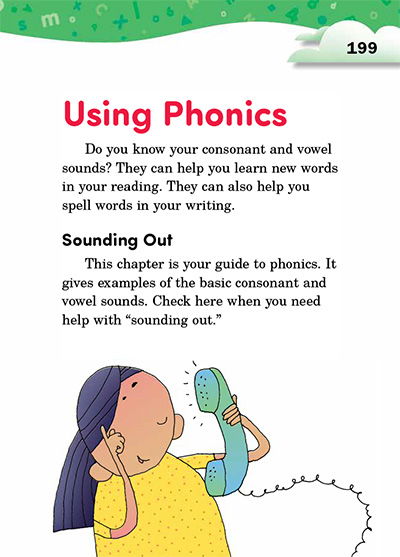Page 199 from

Start-Up Activity
Have students say the following words out loud:
- Octopus
- Oak tree
- Out
Ask what each word has in common. (They all begin with the letter "o.") Then point out that the very beginning of each word sounds different, even though they start with the same letter. Repeat the words aloud to demonstrate the differences. Explain that this chapter will help your students understand why these differences occur. Then have a volunteer read aloud the chapter introduction.
Think About It
“The whole world opened up to me when I learned to read”
—Mary McCleod Bethune

Start-Up Activity
Have students say the following words out loud:
- Octopus
- Oak tree
- Out
Ask what each word has in common. (They all begin with the letter "o.") Then point out that the very beginning of each word sounds different, even though they start with the same letter. Repeat the words aloud to demonstrate the differences. Explain that this chapter will help your students understand why these differences occur. Then have a volunteer read aloud the chapter introduction.
Think About It
“The whole world opened up to me when I learned to read”
—Mary McCleod Bethune